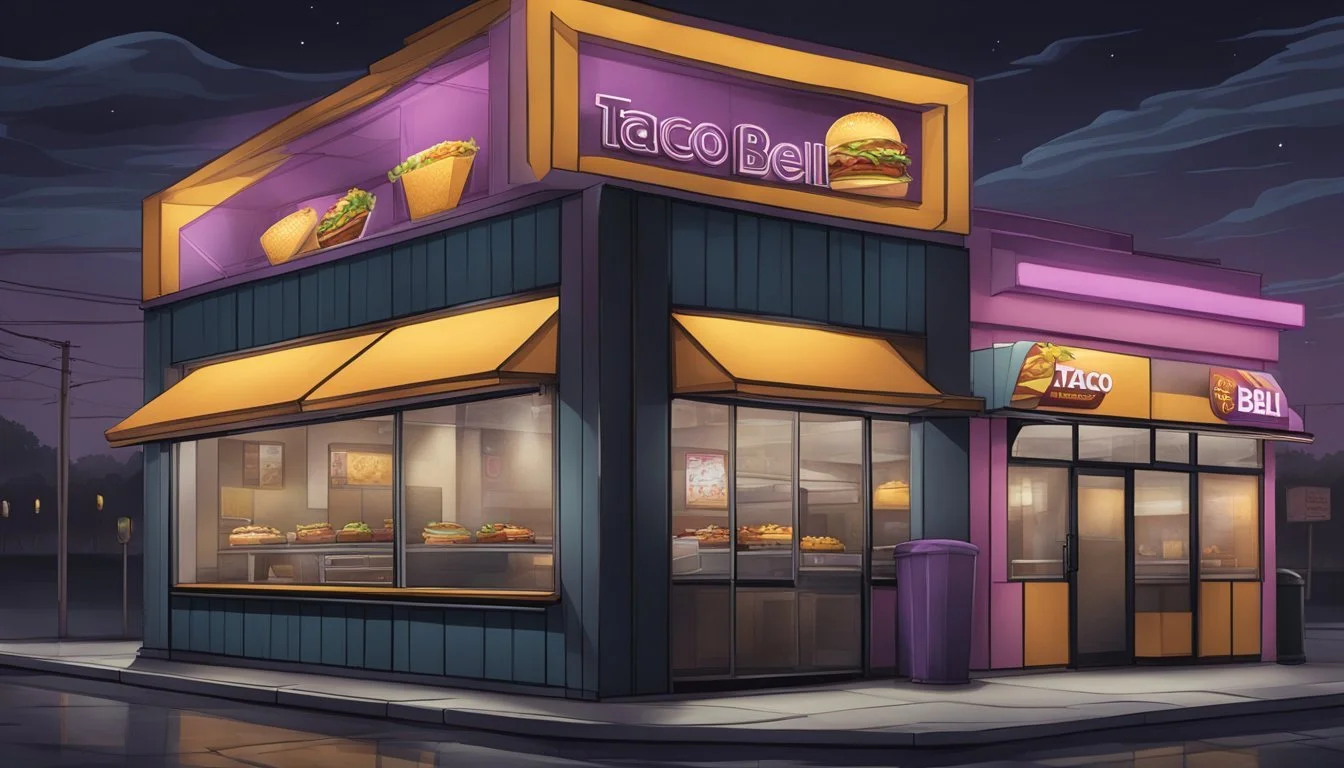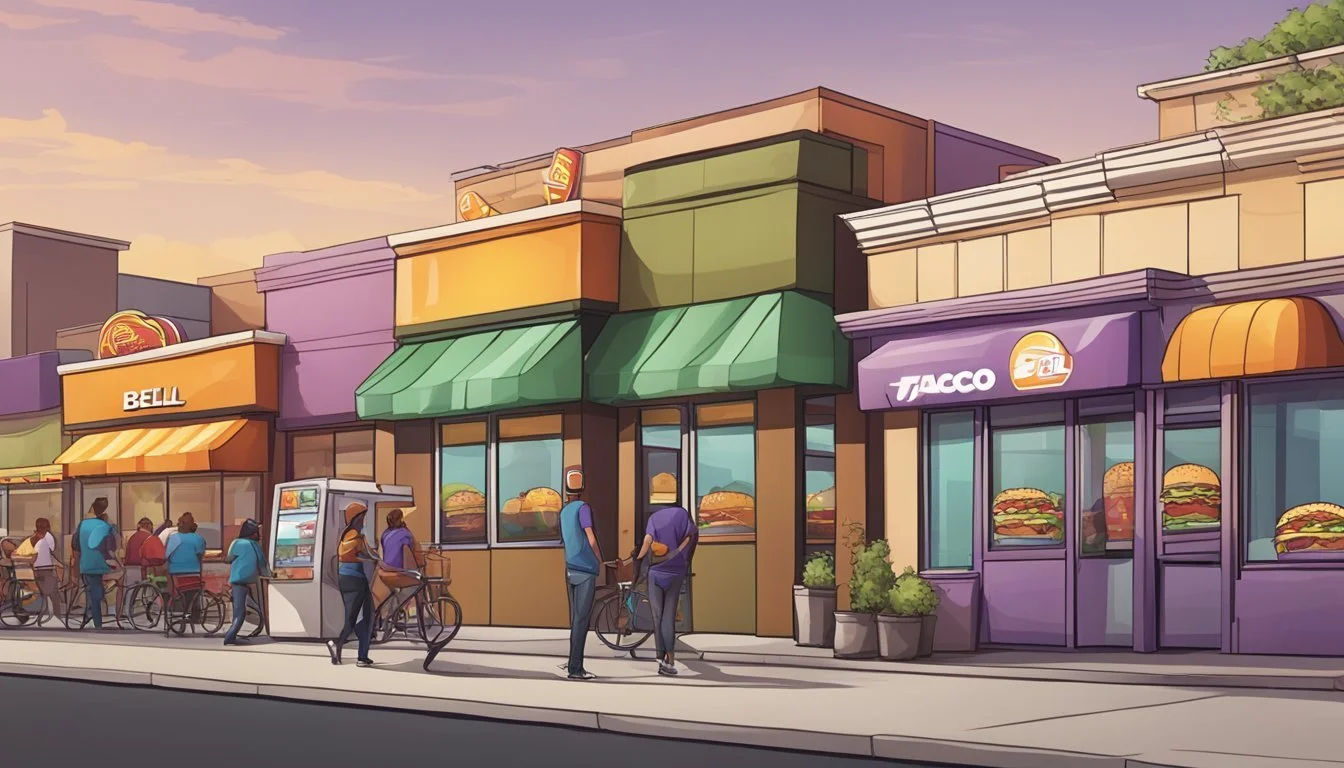Henry Louis Wallace: 5 Fast Food Restaurants Central to the Taco Bell Strangler's Crimes
Mapping the Serial Killer's Hunting Grounds
Henry Louis Wallace, known as the "Taco Bell Strangler," terrorized Charlotte, North Carolina in the early 1990s. His crimes left a lasting impact on the community and highlighted the vulnerability of young women working in the fast-food industry.
Wallace's connection to fast-food restaurants played a crucial role in his ability to target victims and evade capture for an extended period. This article examines five key establishments linked to Wallace's crimes, shedding light on how he used his employment and familiarity with these locations to carry out his heinous acts.
1) Hardee's
Hardee's fast food restaurant played a significant role in Henry Louis Wallace's criminal activities. Wallace worked at a Hardee's location in Charlotte, North Carolina, during the early 1990s.
This employment provided Wallace with access to potential victims and a seemingly ordinary cover for his heinous acts. Several of his victims were coworkers or acquaintances he met through his job at Hardee's.
The restaurant's late-night hours and shift schedules allowed Wallace to familiarize himself with his victims' routines. He often targeted women who worked similar shifts or lived near the Hardee's location.
Wallace's position at Hardee's also helped him establish trust with his victims. As a coworker, he could easily strike up conversations and gather personal information about the women he later targeted.
The Hardee's connection became a crucial element in the investigation of Wallace's crimes. Detectives used employment records and witness statements from the restaurant to piece together his pattern of attacks.
2) Wendy's
Henry Louis Wallace's employment at Wendy's played a role in his criminal activities. He worked at a Wendy's restaurant in Charlotte, North Carolina during the early 1990s.
Wallace used his position at Wendy's to gain access to potential victims. He often targeted young women who were his coworkers or acquaintances from the fast food industry.
The Wendy's location where Wallace worked became a point of interest for investigators. They examined employee records and interviewed staff members to piece together his movements and connections.
Wallace's time at Wendy's allowed him to establish a seemingly normal routine while carrying out his crimes. He maintained a job in the food service industry to avoid suspicion.
The fast food environment provided Wallace with opportunities to observe and interact with potential victims. He used his charm and position to gain trust before committing his heinous acts.
3) Bojangles
Henry Louis Wallace's connection to Bojangles restaurant played a role in one of his tragic crimes. The fast-food chain became associated with his pattern of targeting women he knew through work.
Wallace killed Shawna Hawk, a 20-year-old Bojangles employee, in February 1993. Hawk had been working at the restaurant at the time of her disappearance. Her body was later discovered in her bathtub.
This murder highlighted Wallace's method of exploiting workplace connections to gain access to his victims. He often used his familiarity with coworkers to establish trust before committing his crimes.
The Bojangles incident was part of Wallace's larger pattern of targeting women in the fast-food industry. It demonstrated how he used these environments to select and approach his victims.
Wallace's association with Bojangles and other restaurants ultimately contributed to his nickname, "The Taco Bell Strangler." This moniker reflected the central role that fast-food establishments played in his series of murders.
4) Taco Bell
Taco Bell played a central role in Henry Louis Wallace's criminal activities, earning him the moniker "Taco Bell Strangler." Wallace worked at multiple Taco Bell locations in Charlotte, North Carolina during the early 1990s.
The fast-food chain provided Wallace with access to potential victims. He often targeted female coworkers or acquaintances he met through his employment at Taco Bell.
Wallace's position at Taco Bell allowed him to gain the trust of his victims. He used his charm and familiarity with colleagues to lure them into vulnerable situations.
The restaurant's late-night hours also facilitated Wallace's crimes. He would sometimes commit murders after closing shifts or during late-night encounters with victims.
Taco Bell became a recurring element in the investigation of Wallace's crimes. Detectives traced connections between victims and the various Taco Bell locations where Wallace had worked.
The association with Taco Bell became so prominent that it shaped Wallace's infamous nickname, solidifying the restaurant's unfortunate link to his series of murders in Charlotte.
5) Burger King
Henry Louis Wallace worked at various fast food establishments during his crime spree, including Burger King. This popular chain became an unwitting backdrop to some of his activities.
Wallace was employed at a Burger King location in Charlotte, North Carolina in the early 1990s. This job provided him with a seemingly normal facade while he carried out his heinous acts.
During his time at Burger King, Wallace interacted with potential victims and gained their trust. The restaurant's late hours and shift schedules allowed him opportunities to observe and target women.
Burger King, like other fast food jobs Wallace held, gave him access to a diverse group of coworkers and customers. This environment enabled him to blend in and avoid suspicion for an extended period.
The Burger King connection highlights how Wallace used ordinary workplaces to conceal his true nature. It serves as a chilling reminder of how serial killers can hide in plain sight within common settings.
Henry Louis Wallace's Background
Henry Louis Wallace's life took a dark turn from a seemingly normal upbringing to a series of heinous crimes. His background reveals contrasts between his early years and the criminal path he ultimately chose.
Early Life
Henry Louis Wallace was born on November 4, 1965, in Barnwell, South Carolina. He grew up in a small town environment, raised primarily by his mother and grandmother. Wallace attended local schools and was described as an intelligent student.
As a young adult, Wallace joined the U.S. Navy. He served for several years, receiving an honorable discharge. This period of military service appeared to provide structure and direction to his life.
After leaving the Navy, Wallace moved to Charlotte, North Carolina. He held various jobs in the fast food industry, including positions at Taco Bell restaurants.
Criminal History
Wallace's criminal activities began in the early 1990s. His first known murder occurred in 1990 in his hometown of Barnwell, South Carolina. The victim was Tashonda Bethea, a young woman he knew.
Between 1992 and 1994, Wallace committed a series of murders in Charlotte, North Carolina. He targeted primarily young African American women, many of whom he knew through work or social connections.
Wallace's crimes often involved sexual assault before murder. He typically strangled his victims, earning him the moniker "Taco Bell Strangler" due to his employment history.
Law enforcement arrested Wallace on March 13, 1994. He confessed to multiple murders during interrogation. In total, Wallace was linked to eleven murders across South Carolina and North Carolina.
Key Locations of Crimes
Henry Louis Wallace committed his murders primarily in East Charlotte, North Carolina. He targeted women he encountered through his work at various fast food restaurants in the area between 1992 and 1994.
Taco Bell Connections
Wallace earned the moniker "Taco Bell Strangler" due to his employment at a Taco Bell location in East Charlotte. He worked as a manager at this restaurant near the now-defunct Eastland Mall. Several of Wallace's victims were coworkers or acquaintances he met through his job at Taco Bell.
The East Charlotte Taco Bell became a central location in the investigation. Detectives focused on this restaurant as they pieced together connections between Wallace and his victims. Many of the women he murdered had ties to this specific Taco Bell, either as employees or regular customers.
Other Fast Food Establishments
Wallace's crimes extended beyond just Taco Bell. He found employment at multiple fast food restaurants in East Charlotte during his killing spree. These jobs provided him access to potential victims and helped him blend into the community.
Some of the other fast food locations linked to Wallace's crimes included:
Bojangles'
Hardee's
Investigators discovered that Wallace used his positions at these restaurants to meet young women. He often manipulated work schedules or offered rides home to isolate his targets. These various fast food establishments became crucial points of interest for law enforcement as they tracked Wallace's movements and connections to the victims.
Impact on the Community
Henry Louis Wallace's crimes deeply shook Charlotte, North Carolina. His actions sparked fear and outrage, prompting significant changes in law enforcement practices and community awareness.
Public Reaction
Charlotte residents were gripped by fear as Wallace's killing spree unfolded. Many women, especially those working in fast food restaurants, felt unsafe.
The community held vigils and rallies to support victims' families. Local organizations launched safety awareness campaigns.
Media coverage intensified, putting pressure on police to solve the cases. Some criticized law enforcement for not connecting the murders sooner.
Law Enforcement Response
Charlotte police faced scrutiny for their handling of the investigation. They increased patrols in high-risk areas and stepped up communication with fast food businesses.
The department created a task force dedicated to solving the murders. They improved DNA testing capabilities and enhanced their victim profiling techniques.
Police Chief Dennis Nowicki publicly acknowledged shortcomings in the initial investigation. The department implemented new protocols for tracking and linking similar crimes.
Training programs were developed to help officers better recognize potential serial killings. Collaboration with FBI profilers increased to aid in future investigations.








